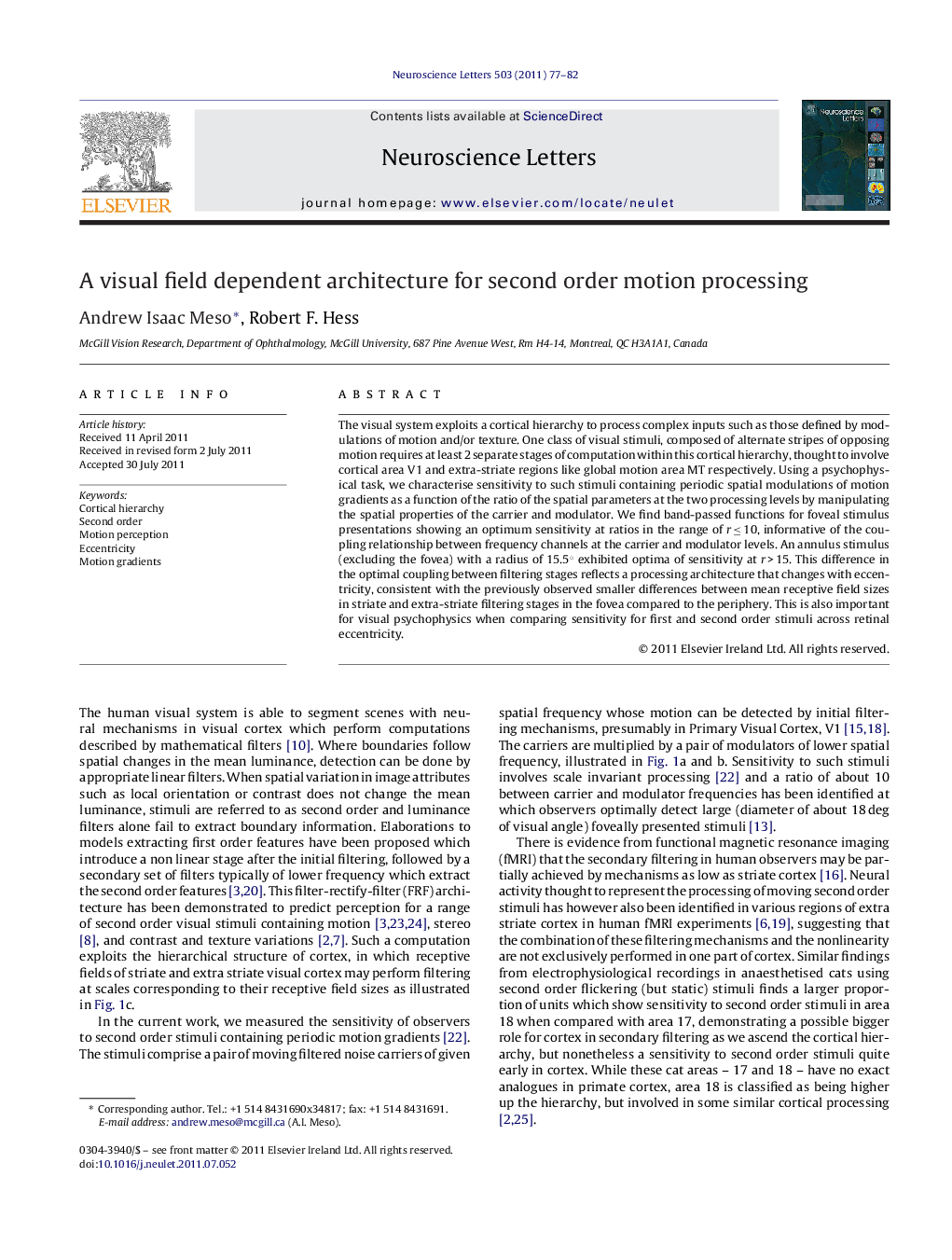| کد مقاله | کد نشریه | سال انتشار | مقاله انگلیسی | نسخه تمام متن |
|---|---|---|---|---|
| 4344827 | 1296686 | 2011 | 6 صفحه PDF | دانلود رایگان |

The visual system exploits a cortical hierarchy to process complex inputs such as those defined by modulations of motion and/or texture. One class of visual stimuli, composed of alternate stripes of opposing motion requires at least 2 separate stages of computation within this cortical hierarchy, thought to involve cortical area V1 and extra-striate regions like global motion area MT respectively. Using a psychophysical task, we characterise sensitivity to such stimuli containing periodic spatial modulations of motion gradients as a function of the ratio of the spatial parameters at the two processing levels by manipulating the spatial properties of the carrier and modulator. We find band-passed functions for foveal stimulus presentations showing an optimum sensitivity at ratios in the range of r ≤ 10, informative of the coupling relationship between frequency channels at the carrier and modulator levels. An annulus stimulus (excluding the fovea) with a radius of 15.5° exhibited optima of sensitivity at r > 15. This difference in the optimal coupling between filtering stages reflects a processing architecture that changes with eccentricity, consistent with the previously observed smaller differences between mean receptive field sizes in striate and extra-striate filtering stages in the fovea compared to the periphery. This is also important for visual psychophysics when comparing sensitivity for first and second order stimuli across retinal eccentricity.
► 2nd order stimuli perception uses 2 stage filtering, probably striate and extra striate.
► Sensitivity finds an optimum ratio of the filter scales of 10, consistent with V1/MT.
► Optimum found to shift with retinal eccentricity, lower in the fovea than periphery.
► The shift suggests a change in processing architecture with eccentricity.
► The finding has implications for psychophysics and modelling of motion perception.
Journal: Neuroscience Letters - Volume 503, Issue 2, 3 October 2011, Pages 77–82